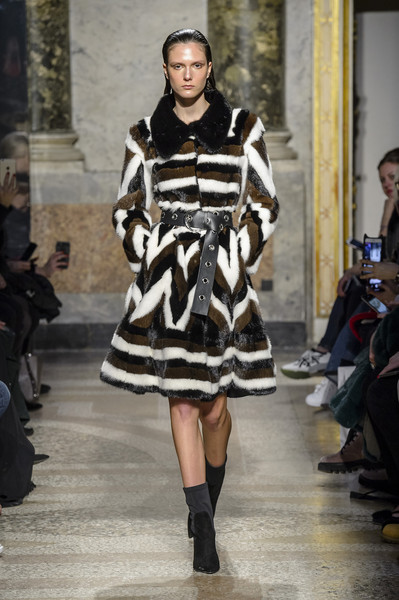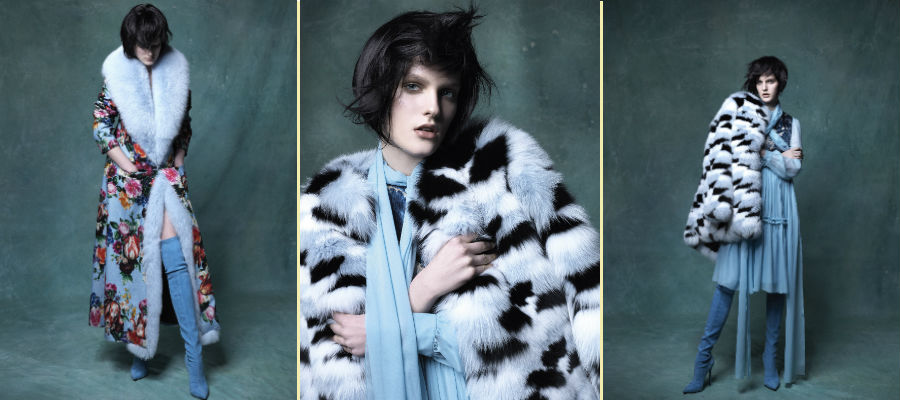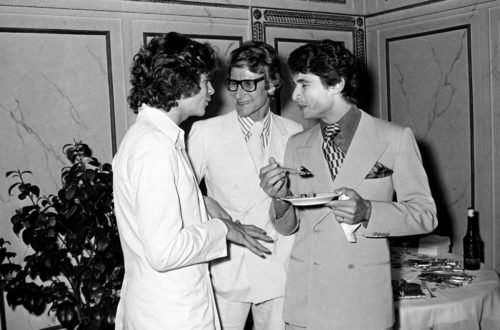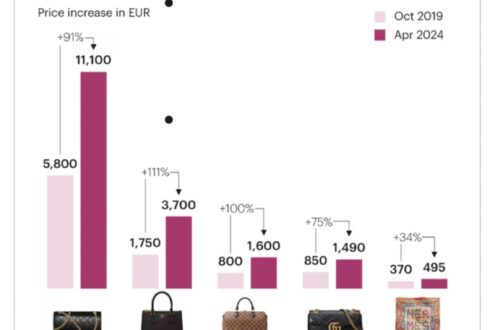The story of Vladimiro Gioia – Italian master of the fur market – is the story that any emerging designer would love to tell as its own.
“When you create a collection, you are offering yourself. It’s like getting naked in front of the customers.”
After working for several years for the family company – Gioia Pellicce – in 2010 he started his own business. The unusual features of its products immediately attracted the attention of luxury brands such as Valentino, Burberry, Dior, John Galliano and many others.
The turning point was in 2010 when Mr. Gioia was chosen by Domenico Dolce and Stefano Gabbana for the project “Spiga 2” – focused on the promotion of new designers.
After only 4 short years of activity, Gioia currently sells its products to 30 of the best department stores worldwide.
Bocconi Students for Fashion had the chance to have a meeting with Mr. Gioia, and we asked him some questions.
 What happened after you were selected by Dolce and Gabbana?
What happened after you were selected by Dolce and Gabbana?
Well, the press got interested in my product. I got some very important reviews from newspapers like “The New York Times” and “Elle Italia”. What really caught their attention was the process through which my furs are made: they are 100% “Made in Italy” and handcrafted. After that, many boutiques – both Italian and foreign – were interested in having my products. Some examples are Antonia in Milan and Joyce in Hong Kong.
What was the biggest satisfaction for you, regarding the whole “Spiga 2” experience?
Not only did it gave me great visibility, but I also realised that the product was actually really appreciated by the customers. In fact, in a few short months I sold several pieces and that made me understand that people were willing to buy my furs.
What is it that makes your furs so special ?
As I previously said, they are 100% Made in Italy and handcrafted. I personally choose the workshops which I collaborate with, and teach the artisans how to produce the pieces. The idea behind is to produce a completely unique product, something that you can’t find anywhere else.
What was the biggest challenge you where faced with?
The most difficult part was definitely proposing a handcrafted product, which takes about 2-3 weeks to be produced. Nowadays the fashion industry is based on the speed of the production, factors that very often – too much – replace the quality. The only way to compete with Luxury brands such as Prada or Chanel is to create a different product, characterised by superior quality.
What is your biggest inspiration when designing a new collection?
I have many. I find inspiration in everything: traveling, museums, art and paintings. For instance my last collection was inspired by the mosaic of Monreale. But I believe traveling is fundamental, especially for designers who aim to reach a global market. It’s true that you need to keep your style and your ideas, but it’s very important to go around the world to embrace the culture of foreign customers.
Luxury is a very complicated concept, which can be defined in multiple ways. What is your vision of luxury?
Luxury is many things. It’s the time dedicated to produce each piece. It’s not just an expensive material which is turned into the final product. It’s any detail in that product, any hour spent working on it, any part of the manufacturing process that can’t be seen but converges to create a masterpiece. It’s also the waiting time: when you buy my furs you know that you won’t get it in a few days, but you need to wait 3 weeks.
Previously you nominated “Joyce”, one of the most important luxury department store in China. What does the Asian market represent for you?
Right now it is the most attractive market in the world. Asian customers are more willing to buy my furs, even if my brand is not very famous yet.
Why do you think that is?
Well, in my opinion Asian people are more product oriented. They really appreciate the quality and the design of my furs, and they buy them even if they don’t know my brand. This made me realise that, in the end, my products are really appreciated.
Let’s talk a bit about the American Market. It is a very important one, but I see that currently you don’t have any department stores in the U.S. among your clients. Why?
The answer to this is very simple. The American market is the complete opposite from the Asian one: customers care much more about the brand and they are not willing to spend that amount of money on a fur of an “unknown” designer. In addition to that, the costs of the fur in the U.S. would be even higher because of the exchange rate and transportation costs.
At the beginning you said that when you create a collection you “get naked in front of the customers”. Can you tell us exactly what the story you want to tell them is?
My story is made of workshops, artisans and craftsmanship. When customers buy my furs I don’t want them to feel as if they just bought an expensive jacket. They have to know that they are buying a piece of the life of the artisan who made it, a piece of his time.
Thank you for telling us your inspiring story. Good luck in the future.

by Pierandrea Miglietta





